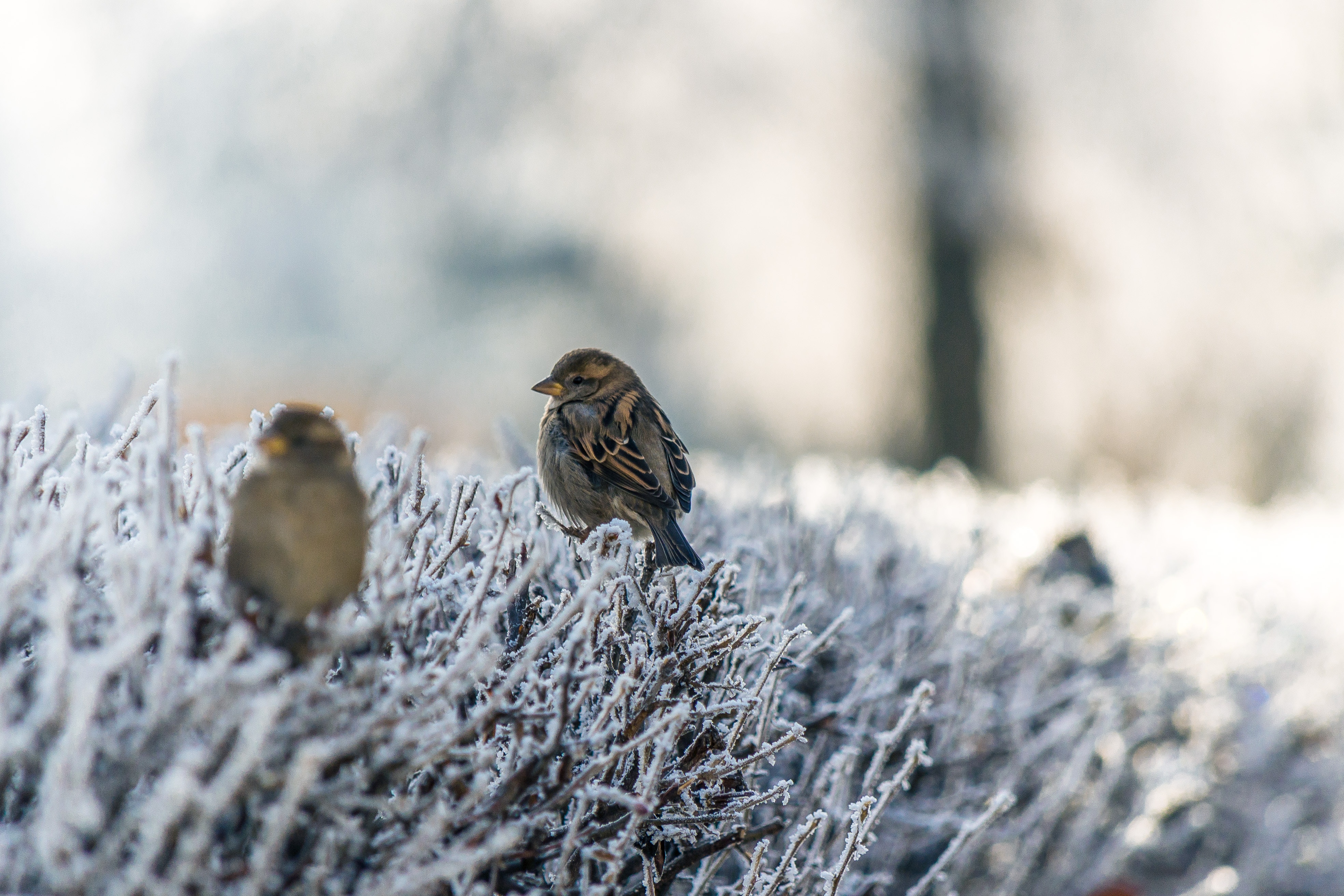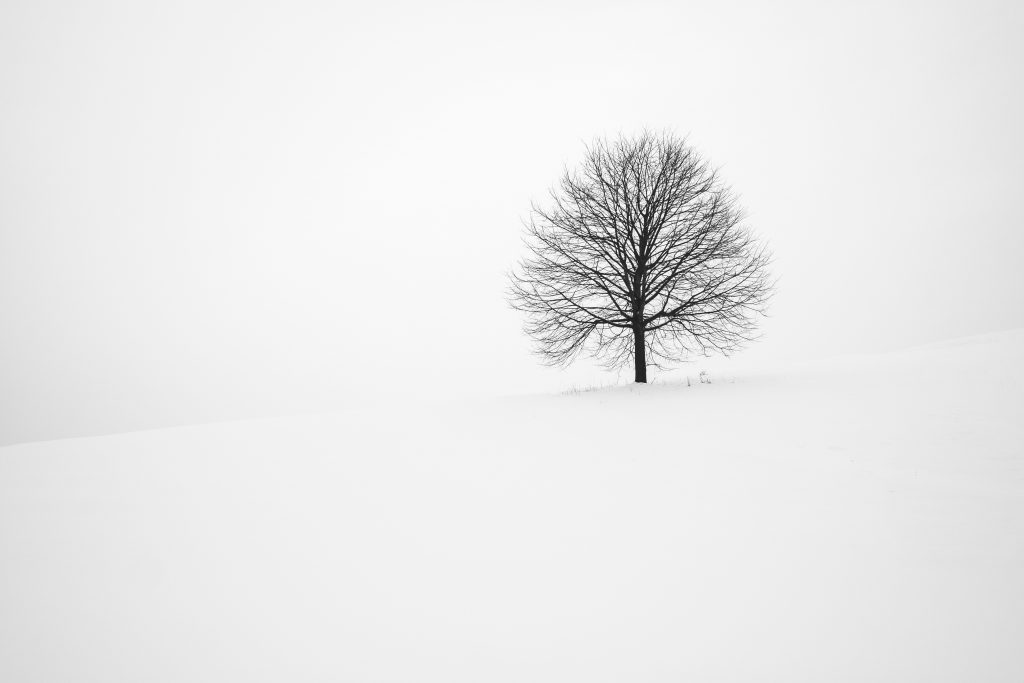Q: Do I really need to water during the winter?
A: Easy answer – definitely! High winds, dry air, low humidity, low precipitation, and fluctuating temperatures are normal in our climate; and they can wreak havoc on plants.
Long, dry periods lead to injury and death to plant roots. This is especially true with fall planted perennials, most woody plants (trees and shrubs), newly established lawns and lawns with southern and/or western exposure; but all plants, even mature ones suffer. Reflected heat from windows, buildings, walls, and fences on sunny days adds to the problem. While plants may appear normal come spring, their weakened condition leaves them more susceptible to insects and diseases and thus more likely to die when temperatures rise. The only thing we can do to prevent this is to give them water. In a nutshell, here’s our take on winter watering. Then read on for more in depth advice!
- Generally speaking, plan to water about once or twice a month through April
- Water when all of the following are true:
- Air temps are above 40 F
- The soil isn’t frozen and there is no snow cover
- There is no snow or precipitation in the forecast
- In cold weather, water should be trickled slowly into the soil at mid-day so there is time to soak in before possible freezing.
Note: Your sprinklers should remain off for the cooler season. Winter watering is done by hand or hose.
What:
This article reviews how to prioritize which plants to water in the winter.
First and most importantly, be sure to water any newly planted plants. You can avoid succulents and low-water lawns such as blue grama grass lawns.
Then, move to trees and existing lawn in wind swept or sun drenched locals.
Lastly, less critical, but still beneficial is to water more mature gardens.
When:
To prepare trees and shrubs for winter dormancy, water them thoroughly in the fall so they start the winter with moist soil.
Water once or twice a month until April whenever there is less than one inch of precipitation, sooner if there have been high winds or if we are in a drought.
 When the weather has been especially dry for a number of days or if several days’ forecast is for warm, dry weather, check your soil’s moisture with a screwdriver, and water if it is fairly dry. Using a flat-head 12” screwdriver plunge it into the ground about every 10 feet; if the soil isn’t frozen and it is difficult to push in 2 or 3 inches, you need to water. Sandy soils may need water even if it is easy.
When the weather has been especially dry for a number of days or if several days’ forecast is for warm, dry weather, check your soil’s moisture with a screwdriver, and water if it is fairly dry. Using a flat-head 12” screwdriver plunge it into the ground about every 10 feet; if the soil isn’t frozen and it is difficult to push in 2 or 3 inches, you need to water. Sandy soils may need water even if it is easy.
Choose days when no snow is on the ground and the soil isn’t frozen. In cold weather, water should be trickled slowly into the soil.
Water only when air temperatures are above 40 degrees F. Apply water at mid-day so there is time to soak in before possible freezing at night. A solid layer (persisting for more than a month) of ice on lawns can cause suffocation or result in matting of the grass.
Newly planted shrubs will require more winter water.
How:
Soaker hoses make it easier; coil them in spirals around trees, wind them through shrubs and perennials, and leave them in place until spring.
Frog-eye and other soft spray nozzles work, too.
Soil needles work well for recent transplants. Insert them at an angle and only to an 8″ depth so as not to water outside root area, the top 12 inches of the soil. Water on low to moderate pressure for 3-5 minutes. Soil needles work best if the ground is soft.
For large, established trees, sprinklers are more efficient and the lawn can be watered at the same time. Allow sprinklers to run 30 minutes at each setting.
On hard or compacted soils, soak, wait and soak again to avoid water runoff.
Where:
The dripline of trees, the area directly under the tips of the branches, is the best place to water. Soak two to three feet on either side of the dripline, to a depth of 12 inches. Puncture the soil with a 12″ screwdriver to check the water depth; it should go in easily. With young trees, the most important area is halfway between the trunk and several feet beyond the dripline. For older trees with extensive roots, Tony Koski, CSU turfgrass specialist, suggests watering the lawn – 2 birds with 1 stone effect.
Water the area under the branches in at least twelve sites for a medium-sized or larger tree. Disperse water sites evenly within the circle bounded by the dripline. For new trees, water four sites at least 3 feet from the trunk (stem).
Clean-up:
Remember to disconnect hoses and drain them to prevent hose bibs and hoses from freezing and cracking.
 Contributed by Jean Lovell, long-time Resource Central volunteer and former master gardener, who helped answer your gardening questions. Although Miss Jean has retired from her volunteer role, we (Garden In A Box experts and low-water landscape enthusiasts) are here to help answer your questions.
Contributed by Jean Lovell, long-time Resource Central volunteer and former master gardener, who helped answer your gardening questions. Although Miss Jean has retired from her volunteer role, we (Garden In A Box experts and low-water landscape enthusiasts) are here to help answer your questions.
Please don’t hesitate to reach out to us at: GardenInfo@ResourceCentral.org or (303) 999-3820 x222.











